The tiles are hexagonal cylinders with an imprint of either one, two or three fish on the top side. Coloured inserts fit inside the tiles' underside cavities, to give the effect of brightly coloured fish trapped under a thin layer of ice. The fish themselves are just shapes cut through the ice tiles, making the inserts clearly visible. The inserts are slightly smaller than the cavity underneath the tile, in order to counter-act my printer's behaviour of printing objects slightly thicker than expected (due to coarse PLA layering).
The penguin tokens are based off a tutorial about how to build a penguin from a sphere, so the only challenge was to customise the resulting penguins into a practical player tokens. The penguins are short and rotund, resulting in a low center of gravity. This makes it easier for players to move the tokens around with less risk of them falling over.
In blender, the easiest way to create a hexagon is to create a cylinder with six sides. After this, take the opportunity to resize the tile properly to ensure that it prints at the correct size. Just scale it while keeping its x and y equal, and reduce the z to squash it down. Next comes creating the space underneath the tiles for the inserts to fit. This process is relatively easy: Extrude the cylinder's bottom face in-place (don't move it), use Push/Pull to push the bottom face in by 0.1 (10%) and then extrude it up inside the cylinder, about half-way. The tile's shape is now complete.
Next, import fish SVG shapes into the scene and scale them to fit on the tile's top surface. Use the top camera to focus on the tile from above, and ensure the view mode is set to "othographic". Then use Knife Project to cut the shape straight through the tile, remove one of the cut-through faces and extrude the other face to close the gap, then delete that face as well.
The inserts are also simple hexagonal tiles, sized to fit comfortably inside the tiles with when printed. This means a gap of about 0.15mm on all sides.
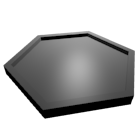
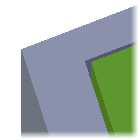
The penguin involved a lot of tweaking to get the dimensions right, making it difficult to describe the process beyond the steps covered in the tutorial mentioned above. As each penguin is printed as a single colour, it's easier to represent its eyes as spheres bulging out of its head. This adds to the penguin's cartoonish appearance, fitting in with the game's style. Fusing the penguin's two flippers to its torso makes them stronger and less likely to break off while being handled. Finally, the bottom of the penguin's feet, torso and tail are all completely flush and flat, so the penguin can "sit" still.
Another important part of the penguin's smooth appearance is the use of a "subdivision surface" modifier, which automatically smoothes all of the polygons and points on the penguin. I set it up to perform two subdivision iterations, greatly cleaning up the penguin's appearance.
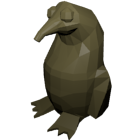
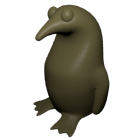
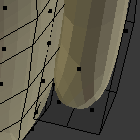
Find out more about Trout Bout:
This article is part of the 3D Printing set.